Waste Not, Want Not.
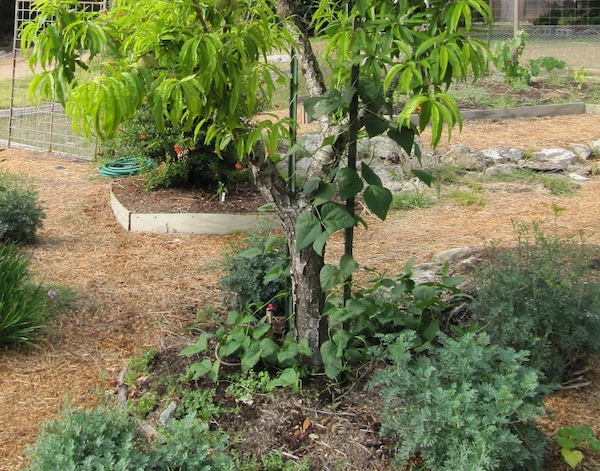 Two years ago, I bought a packet of Italian beans at the nursery thinking it would be fun to have a trellis or wall of beans growing in the garden. There were (as I recall) three types of beans in the mix, all vines. That spring, I planted a few of the seeds, and they germinated to produce a few plants that grew throughout the summer. The beans themselves were not especially good as green beans, and I didn’t take the time to pick many. It wasn’t worth the effort when there were so many other better tasting and easier goodies in the garden.
Two years ago, I bought a packet of Italian beans at the nursery thinking it would be fun to have a trellis or wall of beans growing in the garden. There were (as I recall) three types of beans in the mix, all vines. That spring, I planted a few of the seeds, and they germinated to produce a few plants that grew throughout the summer. The beans themselves were not especially good as green beans, and I didn’t take the time to pick many. It wasn’t worth the effort when there were so many other better tasting and easier goodies in the garden.
Predictably, the vines produced quite a few pods, and I noticed that the beans inside were white to cream-colored — perhaps the type known as Canellini in Italian cooking. 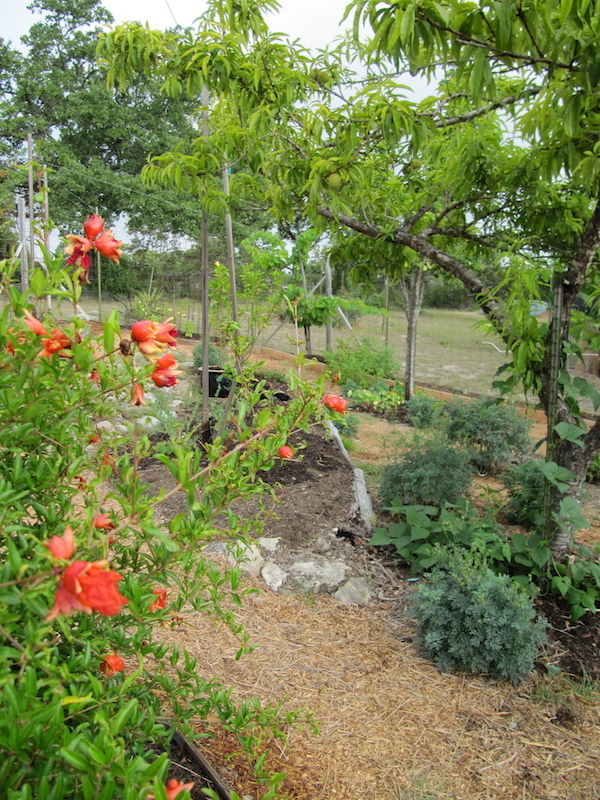 Throughout that fall and winter, it was my intention to collect seed and try again the next year, this time aiming for a dried bean product. Sadly, I just never got to it. By spring, the dried pods were all split and beans had fallen out.
Throughout that fall and winter, it was my intention to collect seed and try again the next year, this time aiming for a dried bean product. Sadly, I just never got to it. By spring, the dried pods were all split and beans had fallen out.
As it happened, we were coming off a long drought, with rain beginning in October of 2009 and continuing throughout the spring of 2010. Surprising things were happening in the gardens, and it was great to see how many plants had survived the drought. Everywhere I looked, new growth was evident, and garden projects multiplied as I tried to get on top of all the possibilities. I didn’t really notice that there were quite a few bean volunteers growing under the peach and pear trees.
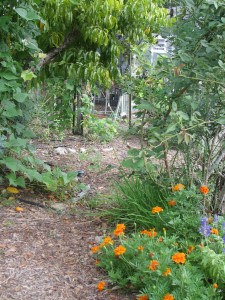 Later on, when I did notice, it was interesting to see what these volunteers would do. I reasoned that the nitrogen-fixing capability of the beans would have to be beneficial to the drought-damaged fruit trees and decided to leave the vines in place and even helped them establish using the trees as a scaffold. A re-working of the drip irrigation system around the trees completed an environment that the beans found very much to their liking. By the end of the summer, both fruit trees, part of the enclosure fence and part of the grape arbors were festooned with luxuriant deep-green bean growth. Having determined the previous year that the green beans were not particularly good for eating, I once again ignored them
Later on, when I did notice, it was interesting to see what these volunteers would do. I reasoned that the nitrogen-fixing capability of the beans would have to be beneficial to the drought-damaged fruit trees and decided to leave the vines in place and even helped them establish using the trees as a scaffold. A re-working of the drip irrigation system around the trees completed an environment that the beans found very much to their liking. By the end of the summer, both fruit trees, part of the enclosure fence and part of the grape arbors were festooned with luxuriant deep-green bean growth. Having determined the previous year that the green beans were not particularly good for eating, I once again ignored them
That fall, the first hard freeze came on Thanksgiving Day. Visiting guests helped me shift the heavy pots that are normally scattered around the place into the greenhouse before we all sat down to a fabulous dinner and amazing piano entertainment. A satisfying end to the 2010 season and that sense of accomplishment and relief that results from harvest and everything tucked safely away for the winter.
The holidays passed, and by January it was time to get ready for the coming season. The dried debris had to be cleared away for the new growth of the spring, and I began to cut and haul barrow-load after barrow-load to the compost heap. What about all of those dried beans?
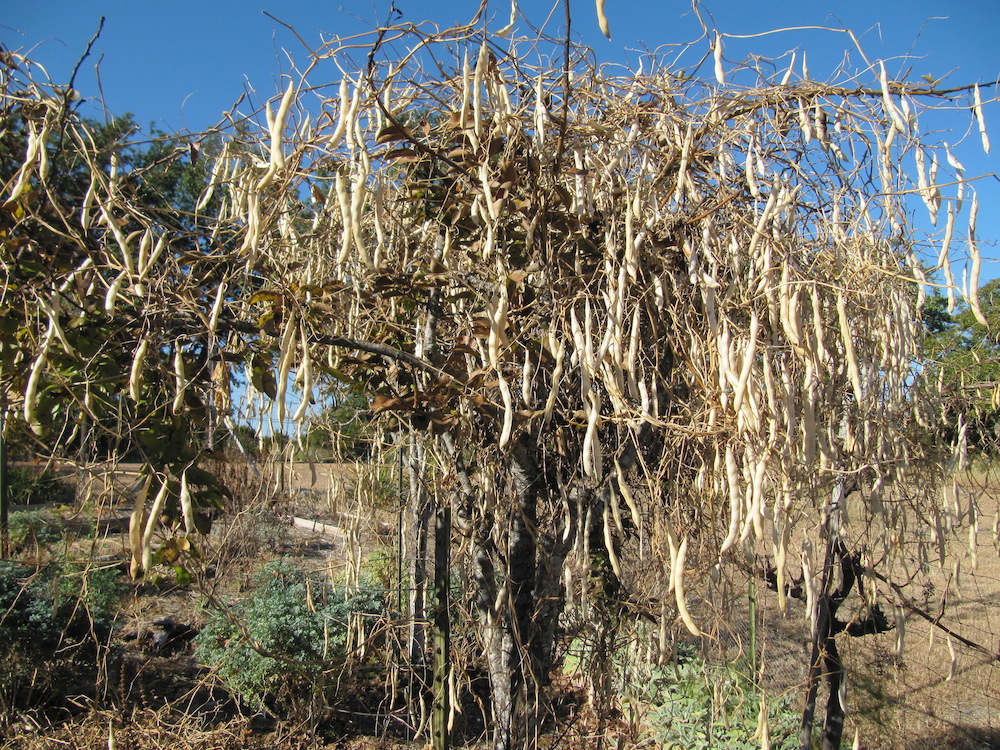 Because there were an astounding amount. Unnoticed until the clearing process, it became clear that the vines had been very productive, and they hung heavy with dried bean pods. Splitting them open, they each contained 6-8 fat, white dried beans — perfect for a winter soup or other Italian bean dish. It seemed a waste not to collect and shell the pods. It also seemed like a lot of effort would be required.
Because there were an astounding amount. Unnoticed until the clearing process, it became clear that the vines had been very productive, and they hung heavy with dried bean pods. Splitting them open, they each contained 6-8 fat, white dried beans — perfect for a winter soup or other Italian bean dish. It seemed a waste not to collect and shell the pods. It also seemed like a lot of effort would be required.

Then I remembered purchasing an antiquated pea-shelling attachment for my KitchenAid mixer collection. Would it work for dried beans too? Maybe this would be a chance to try it out and fill my pantry. I began collecting the beans. Before I was done, and it took several hours of effort spread over two weekends, I had collected two heaping grocery sacks of dried beans that resulted (after shelling) in over 1 and 1/2 pounds of dried beans. 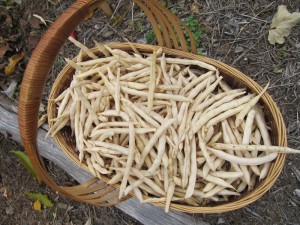 Expensive relative to beans purchased in the store, but fun to see just how productive a small area and a few plants can be. Oh, and the soup?
Expensive relative to beans purchased in the store, but fun to see just how productive a small area and a few plants can be. Oh, and the soup?
Delicious.
